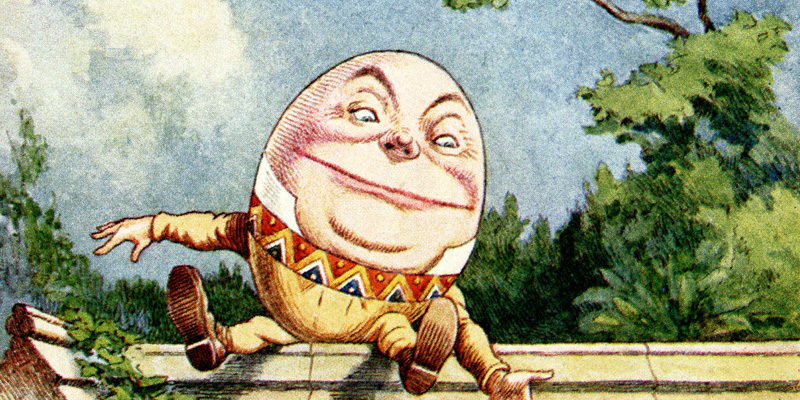When people talk about war, they immediately relate it to the use of guns and other available weapons at the time. While this is not necessarily incorrect, war is not limited to one type of physical violence.
Guns and ammunition are just one element of war. It also involves complex political strategies and intricate tactical operations across various countries over decades or centuries of history. War is an art, and it can be fought psychologically, too.
In this article, we will discuss psychological warfare and the most famous examples of it in human history from 500 BC to the present.
What Is Psychological Warfare?
Encyclopedia Britannica describes psychological warfare as the use of propaganda that is generally intended to demoralize the enemy or break their will. No war can be fought on a psychological level alone, as it always comes with military and political tactics.
Also known as psywar, this tactic has been used in wars for centuries.
Why does a warring party use psychological warfare? It’s one way to gain an advantage without losing lives or using too many guns and other valuable resources. According to Stanford University, the goal of a psywar is to take advantage of the most personal characteristics of humans in a scientific manner.
Psychological warfare leverages the following:
- Deceit
- Fear
- Hate
- Humiliation
- Loneliness
- Pain
When these human emotions are exploited, those affected will be too demoralized to continue fighting. This is what psychological warfare strategies center on.
The specifics of these tactics vary greatly. There are so many ways to hit different human emotions. This will become even clearer once we discuss the various cases of psychological warfare through hundreds of years of historic battles and wars.
Cases of Psychological Warfare Throughout History
From elephants to viral Facebook posts, psychological warfare has changed throughout history. But one thing has remained the same: the creativity.
As Sun Tzu said in The Art of War: “The whole secret lies in confusing the enemy so that he cannot fathom our real intent.”
The following are the most famous examples of psychological warfare leveraged in various battles over the years:
1. Battle of Pelusium (525 BCE)
The Battle of Pelusium is remembered as the war won by cats. According to Greek Historian Herodotus, the war between the Achaemenid Empire, or ancient Iranian Empire, and ancient Egypt started with a doctor.
The two empires used to be on good terms, which prompted Persian King Cambyses II to ask Egyptian Pharaoh Amasis II for an ophthalmologist. In good faith, Amasis II sent an Egyptian doctor to Persia—he was not amused by the forced labor.
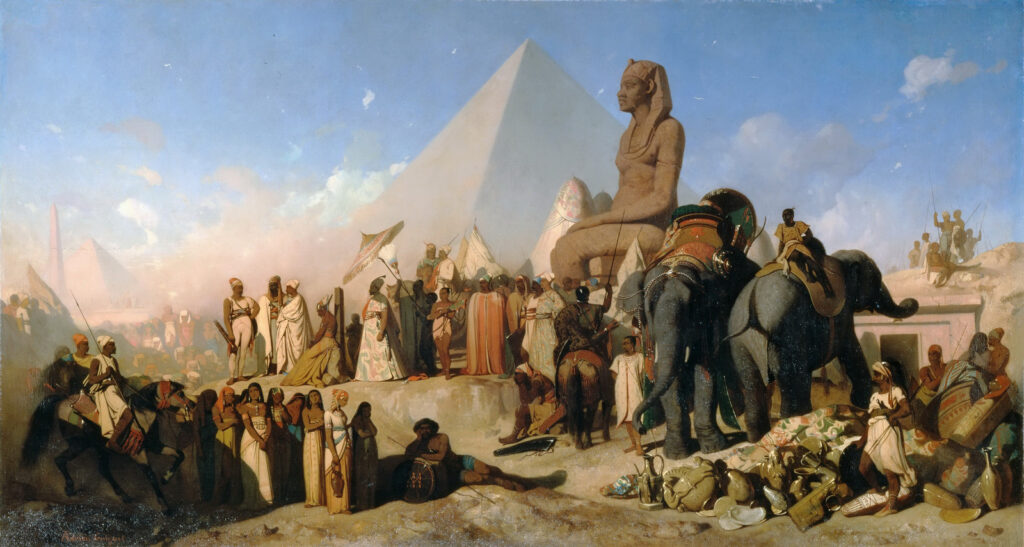
To get back at his pharaoh, the doctor advised Cambyses II to ask Amasis II for his daughter’s hand in marriage. Amasis did not want to lose his daughter to Persia. So instead, he sent the daughter of another pharaoh named Nitetis and claimed her as his own. Once Nitetis was in Persia, she divulged the trickery, and Cambyses was predictably insulted.
Persia then declared war against Egypt. With Persia’s experience in warfare, their success was expected. The country also leaned on Egyptians’ well-known religiosity.
Egyptians venerated animals, especially cats. One of their goddesses is Bastet, who was often depicted with the body of a woman and the head of a cat. Bastet protects the home and is the goddess of fertility and childbirth. Cats were considered Bastet’s own, which is why they cannot be harmed. People would risk going into burning buildings just to save cats.
Armed with that knowledge of their reverence for cats’ lives, Cambyses had his advancing soldiers armed with shields painted with the likeness of Bastet. Moreover, the frontlines brought cats and other animals Egyptians considered sacred: dogs, sheep, and ibises. The Egyptians did not want to hurt the animals, so some of them ran away from the battle as others were massacred.
This is how one can technically say that cats led the victory of the Achaemenid Empire.
2. King Alexander the Great of Macedon (336 – 323 BCE)
Alexander III of Macedon, or Alexander the Great, is one of the most successful conquerors in history. He was king of Macedon between 336 and 323 BCE.
He was just 20 when he started ruling, and by the time he was 30, he had created one of the largest empires in the world, which stretched from Greece to northwestern India. Alexander the Great got his name because he was largely undefeated in battle.
But part of his success is due to psychological warfare—he was known as one of the best to do it. Alexander the Great was known for his political and cultural manipulation. He enforced Hellenistic ideologies in his conquests to encourage unity among diverse peoples.
When Alexander the Great invaded Persia, he married the late Persian King Darius III’s daughter Roxana. He also commanded eight of his officers to marry Persian women. All of his soldiers who married locals were paid to do so. This way, Alexander had many eyes within the country, and any talks of rebellion were quickly quelled.
Spanish conquistadors of the 15th and 16th centuries copied this strategy of marrying locals from the Macedonian king’s playbook.
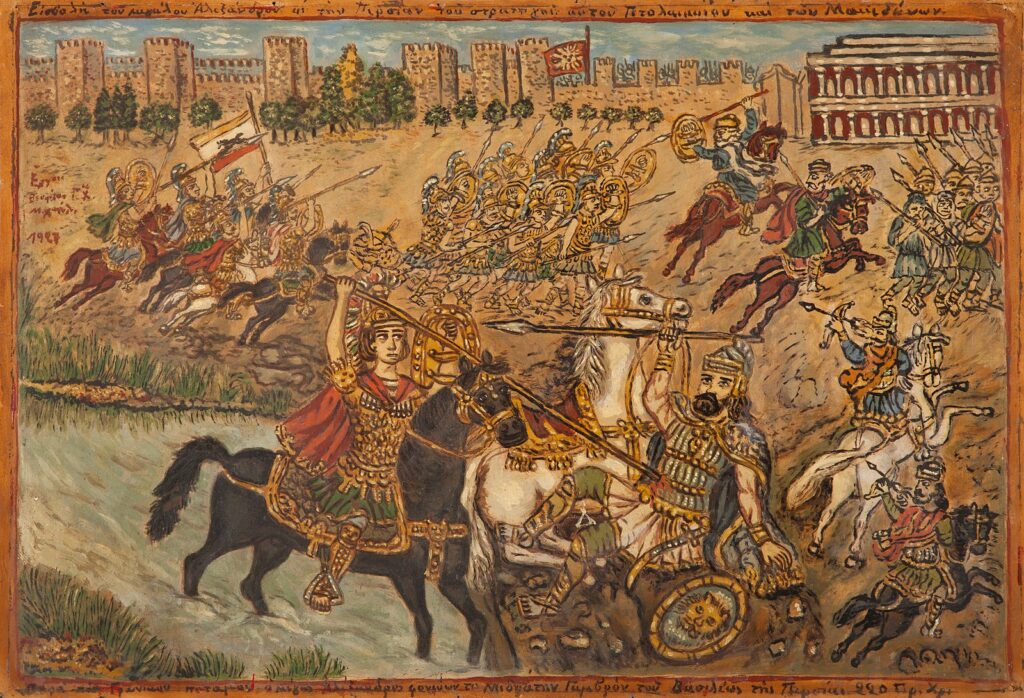
3. Second Punic Wars (218 – 201 BCE)
War horses were mainstays in wars for centuries. Some warring groups in the global south still use horses in fights.
However, there is nothing like war elephants when it comes to warfare. They are effective means of transportation as they could ferry people along with large equipment and supplies. War elephants also stomp on soldiers in their way and hurt people with their tusks.
A war elephant’s sheer size alone already has a psychological impact on its foes.
The first record of war elephants was in 331 BCE, during the Battle of Gaugamela between Alexander the Great and the Army of Macedon and King Darius III and the Persian Army. The Persians had 15 Asian war elephants but still lost the battle.
The most famous and successful use of war elephants happened in the Second Punic War. Hannibal, a Carthaginian general, led 90,000 infantry and 12,000 cavalry across the Ebro River into Saguntum to declare war against Rome.
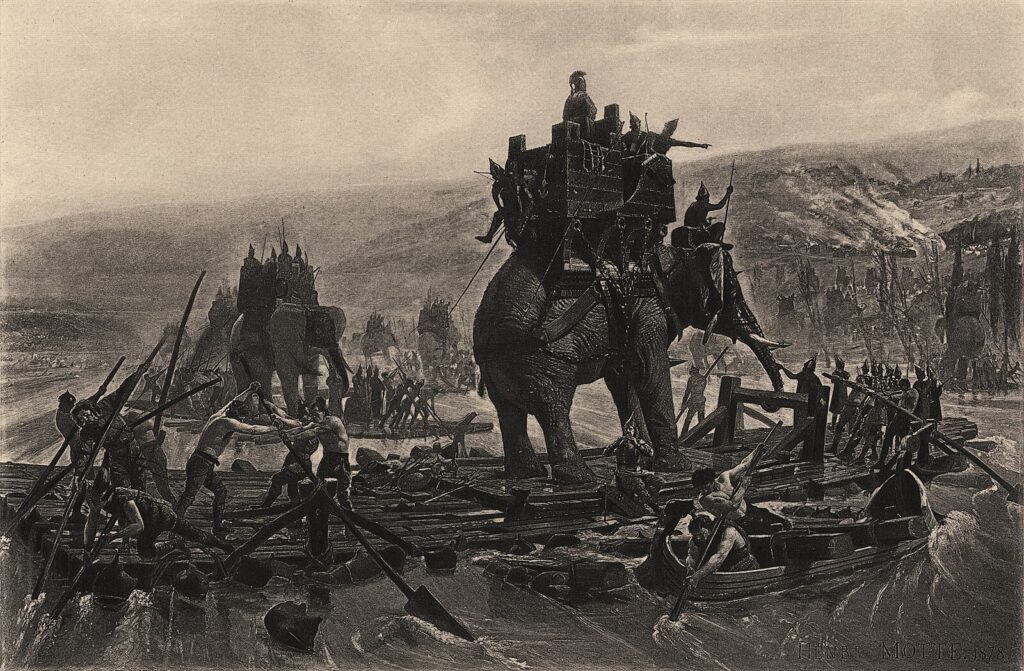
Around 40 war elephants joined the troops, but half of them perished during the march from Spain through the Alps and Italy. The remaining elephants successfully caused panic in the Roman cavalry and Gallic allies, which led to Hannibal’s victories in Ticinus, Trebia, and Trasimene.
After years of facing various elephantine invasions, the Romans learned their lesson. By 202 BCE, they simply allowed the elephants to pass through to inflict minimal damage. In their succeeding battles, the Romans also began to use war elephants.
4. Mongol Empire (13th – 14th century)
Genghis Khan is one of the most feared and famous military leaders and strategists in history.
He founded the Mongol Empire. This became the largest contiguous land nation in the 13th and 14th centuries. Khan successfully invaded tribes, and a large part of China and Central Asia, without using a large military force.
Khan and the Mongols implemented intense psychological warfare throughout their invasions. They spread terror and fear in towns and cities. This was in a bid to make them surrender instead of becoming victims of aggression. Many surrendered and paid tribute for fear of being ransacked. This would mean losing many lives and destroying many structures within their cities.
For those who refused to surrender, the Mongols would destroy their homes and kill many people. A few are allowed to flee so they can spread the word about the terror brought by Khan and the Mongol Empire. By the time the Mongols reached a new town, the residents had already heard of their propensity for massacre, so they would instead surrender peacefully.
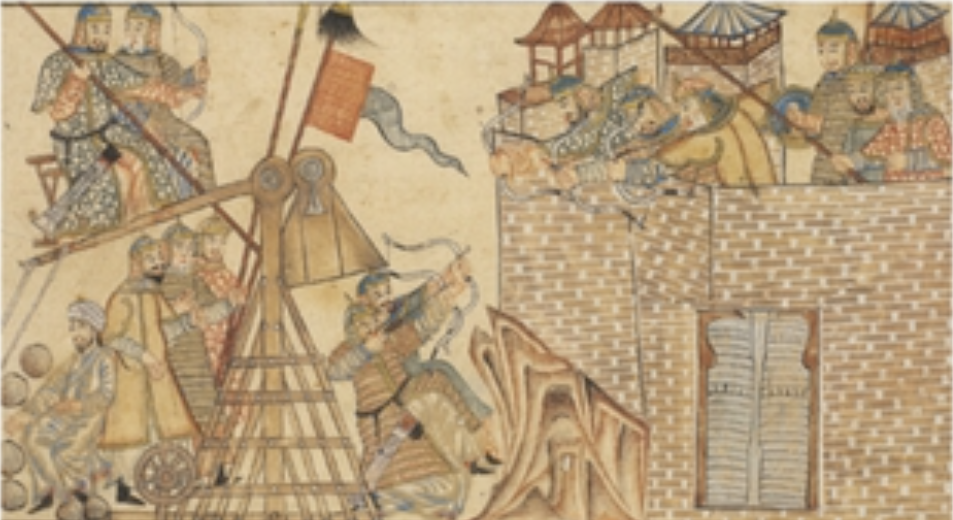
Of course, psychological warfare was also complemented by the Mongols’ top-notch military skills. They were adept horsemen who had well-rounded capabilities, including archery and tactical formations. They were terrific scouts and spies.
The Mongols were also great at deception, which is another form of psychological warfare. A group would flank its enemies on all fronts, which would give the impression the invading army is so much larger than reality. The Mongols were skilled at luring the enemy into vulnerable situations to force them to surrender.
5. World War I (1914 – 1918)
War pundits consider World War I as the beginning of modern psychological warfare. The Great War was one of the deadliest conflicts in the world.
It was the war between the Allies, which consisted of France, the United Kingdom, Russia, the United States, Italy, and Japan, against the Central Powers of the German Empire, Austria-Hungary, the Ottoman Empire, and the Kingdom of Bulgaria.
Both parties, particularly the Germans and the British, made use of newspapers, leaflets, and other means to publish propaganda against the other side. British pilots dropped postcards on German lines. The postcards were supposedly written by German prisoners of war who claimed to have been treated fairly well by the enemy.
Germans, for their part, tried to stir up trouble with Ireland and India, both of which had a tumultuous relationship with the British. It didn’t work.
The British successfully incited the Arab Revolt against the Ottoman Empire, which weakened the Central Powers. Other factors led to Quadruple’s loss in World War I, and the Arab Revolt certainly didn’t help its cause.
6. Nazi Germany (1933 – 1945)
The Germans didn’t take their defeat in World War I well. It was humiliating, and there were “frantic efforts” to save the prestige of the German Army.
When Adolf Hitler and the Nazi Party introduced dictatorship in Germany, their image became everything. They utilized mass media to show off the Nazi’s military skills. Hitler, who was known for his gift of public speaking, was also heavily showcased to sway public opinion.
The Nazis kept a tight hold on their country and threatened neighboring territories. They seized Austria and Sudetenland from Czechoslovakia. And other countries ceded territories to the Nazis out of fear.
Hitler created the Ministry of Public Enlightenment and Propaganda, which shaped public opinion. While the Nazis were feared, the Jews were persecuted.
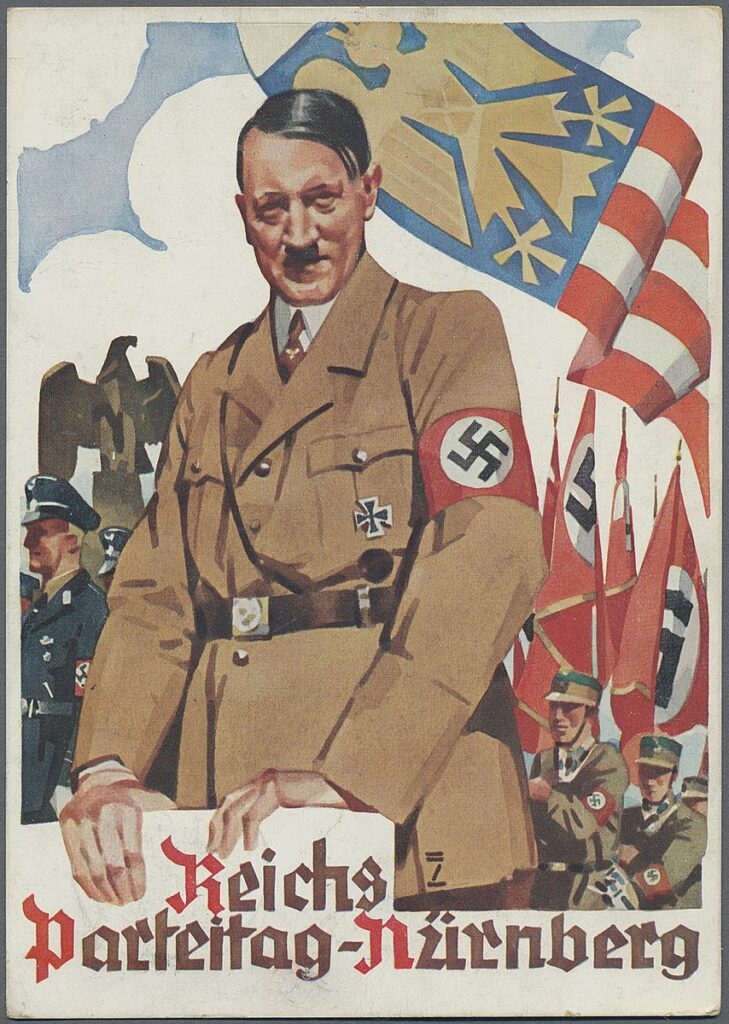
Nazi messaging was successfully propagated through books, films, and theater. Radio broadcasts only communicated what the Nazis wanted the public to hear. Even art and music were controlled by Hitler and his military. Pundits said Hitler was greatly influenced by the psychological warfare the British employed during World War I.
While the Nazis were feared, the massacre and maltreatment of Jews eventually sparked international condemnation. This was the prelude to World War II.
7. World War II (1939 – 1945)
The Second World War was the deadliest conflict in history, with an estimated 70 to 85 million fatalities. The two sides were the Allies, which was composed of the United Kingdom, United States, Soviet Union, and China, and the Axis, which was led by Germany and had Italy and Japan as partners.
As deadly as it was, the psychological war between the two parties was also quite intense. The British sharpened its propaganda machine during World War I, and Nazi Germany had been a pro at it for years.
The United States also upped its propaganda machine with General Douglas MacArthur at the helm. He was the head of the Psychological Warfare Branch.
He organized the distribution of leaflets in the Philippines castigating Japanese soldiers’ presence in the country. The branch also dropped leaflets in Japan to blast its government’s role in World War II while praising Americans’ position in the war.
A leaflet addressed to Japanese civilians read: “Do not believe falsehoods about American cruelty. See for yourselves! Select representatives to come forward and observe the treatment they will receive. Then these representatives can return and guide you to safety. You will receive food, water, clothing, and medical treatment.”
The British also employed deception in their psychological warfare. The British military released fictional orders to confuse Axis soldiers and provided faux visuals. Double agents were deployed, which earned mastermind Dudley Clarke the moniker “the greatest British deceiver of WW2.”
The Allies eventually won the psychological warfare and the war.
8. Cold War (1947 – 1991)
The end of World War II was also the beginning of the decades-long rivalry between the United States and the Soviet Union, known as the Cold War.
Unlike World War II, there was minimal bloodshed but heightened psychological warfare. It was a fierce battle between freedom and communism. Fatalities were indirectly attributed to the Cold War through the superpowers’ participation in proxy wars.
The American psychological warfare during the Cold War was both covert and overt. In 1947, President Harry Truman requested $400 million from Congress to provide economic and military aid to Greece and Turkey so they could remain independent amidst Communist threats. It set off a chain of psyops from both parties and their allies.
The Communist Party of the Soviet Union (CPSU) launched the Communist Information Bureau (Cominform) in 1948. Its role was to highlight Russian values through music and art while promulgating U.S. aggression. To ensure Cominform’s message was undeterred, CPSU limited locals’ communication with foreigners and the outside world.
In 1950, Truman launched the Campaign of Truth. He urged media leaders to combat every “communist lie” with the truth about freedom and democracy. So it went, the American and Soviet leaders trading propaganda disparaging the other, continuing to this day.
9. Korean War (1950 – 1953)
The Korean War is said to be a byproduct of the Cold War. It was a battle between the Soviet-backed Korean People’s Army, which eventually became North Korea, and the U.S.-backed Republic of Korea or, South Korea.
The Americans feared that the North Korean invasion was the beginning of the communist efforts of the Soviet Union and its Warsaw Pact allies consisting of Albania, Bulgaria, Czechoslovakia, East Germany, Hungary, Poland, and Romania.
Meanwhile, South Korea had U.S. support and the Western Alliance. This consisted of North Atlantic Treaty Organization members, such as France, West Germany, Italy, Luxembourg, Spain, the United Kingdom, and many more.
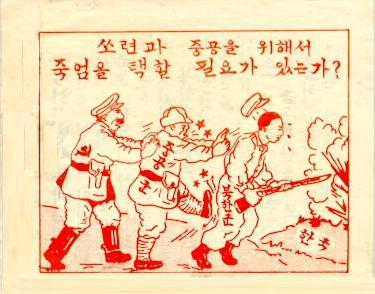
The U.S. had a propaganda team during the Korean War, which received advice from a member of the psywar team against Japan during World War II.
According to a document by Major Albert C. Brauer, they prepared many anti-communism leaflets for the Korean War. But many of the recipients were illiterate, so they had to change the strategy and create leaflets with cartoons and illustrations instead of words.
The Korean War ended with the creation of a two-mile-wide demilitarized zone. This serves as a boundary between North and South Korea and is maintained to this day. The nations are wholly independent, with South Korea remaining a democracy and North Korea continuing to be a communist country.
10. Vietnam War (1955 – 1975)
The Vietnam War was between North and South Vietnam, Laos, and Cambodia. It is considered another proxy of the Cold War. The Soviet Union and its communist allies supported the North, and the U.S. supported the South.
This time, the U.S. lost the proxy war despite the extensive use of psyops. Vietnam also won, as it united the North and South under one Socialist Republic of Vietnam.
While the U.S. lost, its psyops known as Operation Wandering Soul became infamous. In Vietnamese culture, it is important to show respect for the dead through a proper burial. The lack of decent or honorable burial would cause the soul to wander around aimlessly on earth after death.
Armed with this knowledge, American engineers created Ghost Tape Number Ten with the help of South Vietnamese soldiers who dubbed eerie sounds of wandering ghosts. The tape was broadcast late at night in areas controlled by Viet Cong soldiers.
The operation was only briefly successful, as the Viet Cong eventually realized it was just a recording and started firing in the general direction of the broadcast.
11. Social Media
Social media is the current medium for various psyops.
For example, there has long been criticism against Israel for its mistreatment of Palestinians. Hamas and Hezbollah are militant groups that have been adept at showcasing their causes on social media.
The Israel Defense Forces (IDF), for its part, created a social media team comprising young tech-savvy individuals who monitor Hamas and Hezbollah’s internet activities. The IDF releases its own propaganda to counter these sentiments and get people to join their side.

And who could forget the Russian intervention in the 2016 U.S. elections? According to intelligence reports, Russian President Vladimir Putin masterminded Project Lakhta. This was a psyop meant to elevate Donald Trump’s candidacy and harm former U.S. Secretary of State, Hillary Clinton.
The operation involved troll farms that created thousands of social media accounts to promote discord online, provide support for Trump, and vilify Clinton. Since Trump prevailed in the 2016 elections, one may say Putin’s turn at psychological warfare triumphed.
Another attempt was made in the 2020 U.S. elections, but Microsoft got wind of the operation.
The militant group ISIS also knows how to leverage social media effectively. In 2014, the group only had 1,500 members with second-hand weapons they stole or bought from the black market. But the group was able to sow fear and attract new members online. They had passionate supporters who followed their propaganda promoted by bots. The group even had a hashtag: #AllEyesOnISIS.
Then there’s Ukraine, which is still fighting a war with Russia. According to psychologists, half of the war Ukraine is fighting is online. Russia, after all, has become a master of the online game.
Bottom Line
From cats to fake ghosts, and now, social media—these are all instruments in psychological warfare throughout history.
It may sound like they have nothing in common, but there are at least two similar grounds: one, they were all implemented with creativity, and two, they appeal to people’s emotions.
Psychological warfare continues to this day, with a more modern and more dangerous approach, as social media can easily shape millions of people’s opinions and outlooks.

